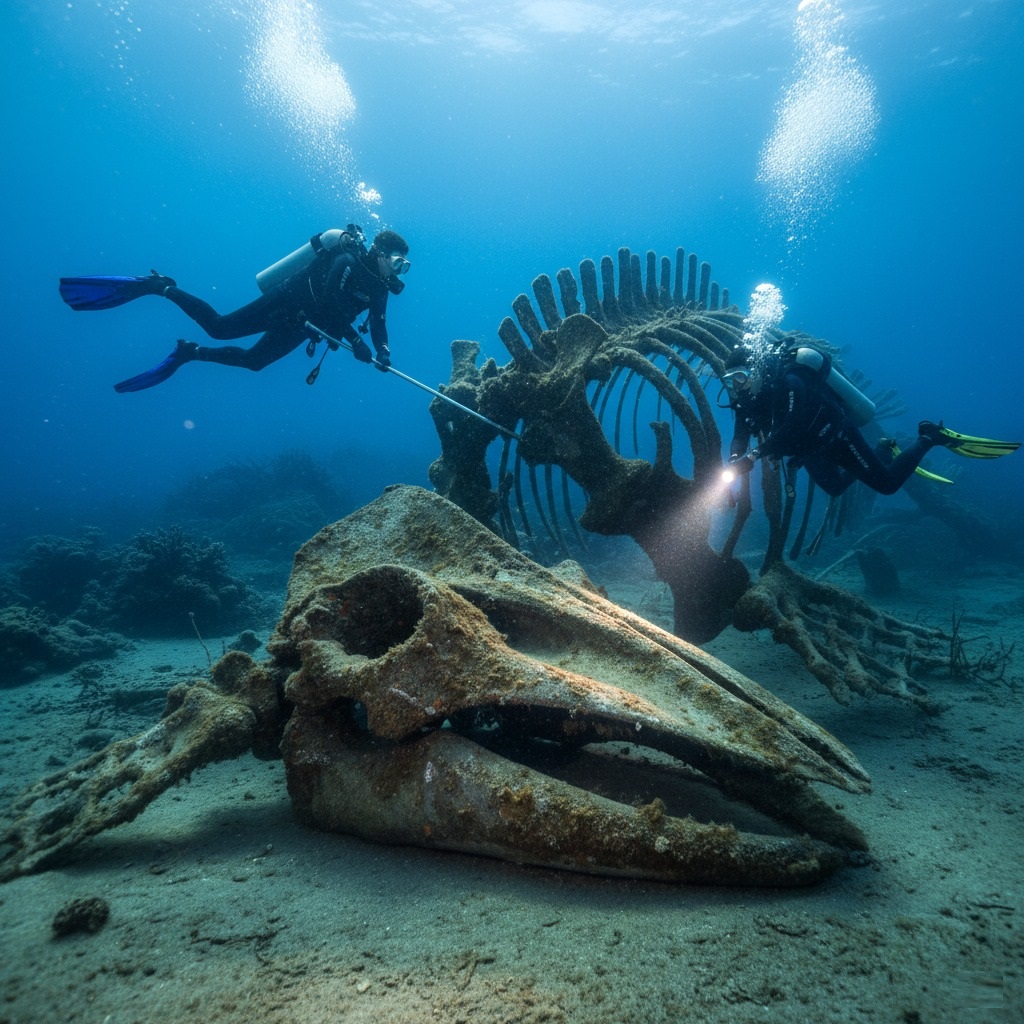Unveiling the Giants of the Deep: Paleontological Survey at the Red Sea’s Bone Yard

The familiar whisper of the Red Sea’s currents enveloped Dr. Aris Thorne as he descended, his dive computer a silent sentinel on his wrist. Beside him, Dr. Lena Petrova, her beacon cutting a focused path through the cerulean depths, signaled their approach. Below them, a colossal silhouette began to materialize from the hazy blue – a sight that still sent shivers down Aris’s spine, even after months of intermittent dives.
It was Lena who had first stumbled upon the anomaly during a routine reef health assessment near Ras Mohammed National Park, a dive site renowned for its vibrant marine life and dramatic drop-offs. Instead of live coral, her sonar had pinged on an improbable, immense structure buried partially in the sandy plain at 40 meters. What they had uncovered was not a shipwreck, but something far, far older: the remarkably preserved skeleton of a baleen whale, a leviathan of an ancient ocean, estimated to be between 10,000 and 12,000 years old, dating back to a period when the Red Sea’s ecosystem was subtly different.
Today was crucial. They were deploying an advanced photogrammetry rig, a complex setup to create a precise 3D model of the entire skeleton. Aris, with his focus on macrofauna paleontology, drifted over the massive skull, its cavernous eye sockets and elongated rostrum speaking of a creature that had navigated Pliocene-Pleistocene waters. He held a high-resolution camera, systematically capturing every angle, the click of the shutter barely audible. The bone, encrusted with generations of coralline algae and sessile invertebrates, held stories etched by millennia.
Lena, meanwhile, was meticulously cleaning a section of the rib cage with a soft brush, her powerful torch beam highlighting minute details. “Aris, look at this,” her voice buzzed through their comms. “There’s an indentation here, near the seventh rib. Consistent with a predation mark, but very old, almost completely re-ossified.”
Aris swam over, his eyes scanning the spot. “Interesting. Perhaps from a particularly aggressive shark, or even an earlier, larger marine predator we haven’t fully documented in this region?” The Red Sea’s geological history was a treasure trove of mysteries, a rift valley that had seen dramatic changes in sea level and biodiversity. This ‘bone yard,’ as their team affectionately called it, was proving to be an unparalleled window into its prehistoric past.
As hours ticked by, marked by their air gauges, the two scientists worked in a silent, synchronized rhythm. The sunlight, filtering through the water’s surface, painted shifting patterns across the ancient bones, a stark contrast to the eternal stillness of their slumber. Each image captured, each measurement taken, was a piece of a grander puzzle. They weren’t just documenting bones; they were tracing the lineage of ocean giants, understanding the ecological dynamics of a bygone era, and adding vital chapters to the archaeological narrative of one of Earth’s most unique seas. As they began their slow ascent, leaving the sentinel skeleton to its watchful vigil, Aris knew the Red Sea still held countless secrets, waiting patiently for the next generation of explorers to unveil them.
